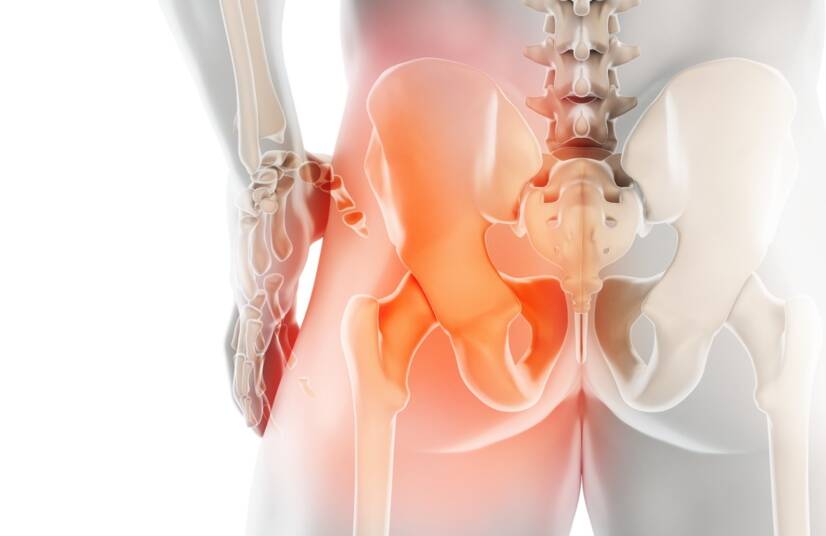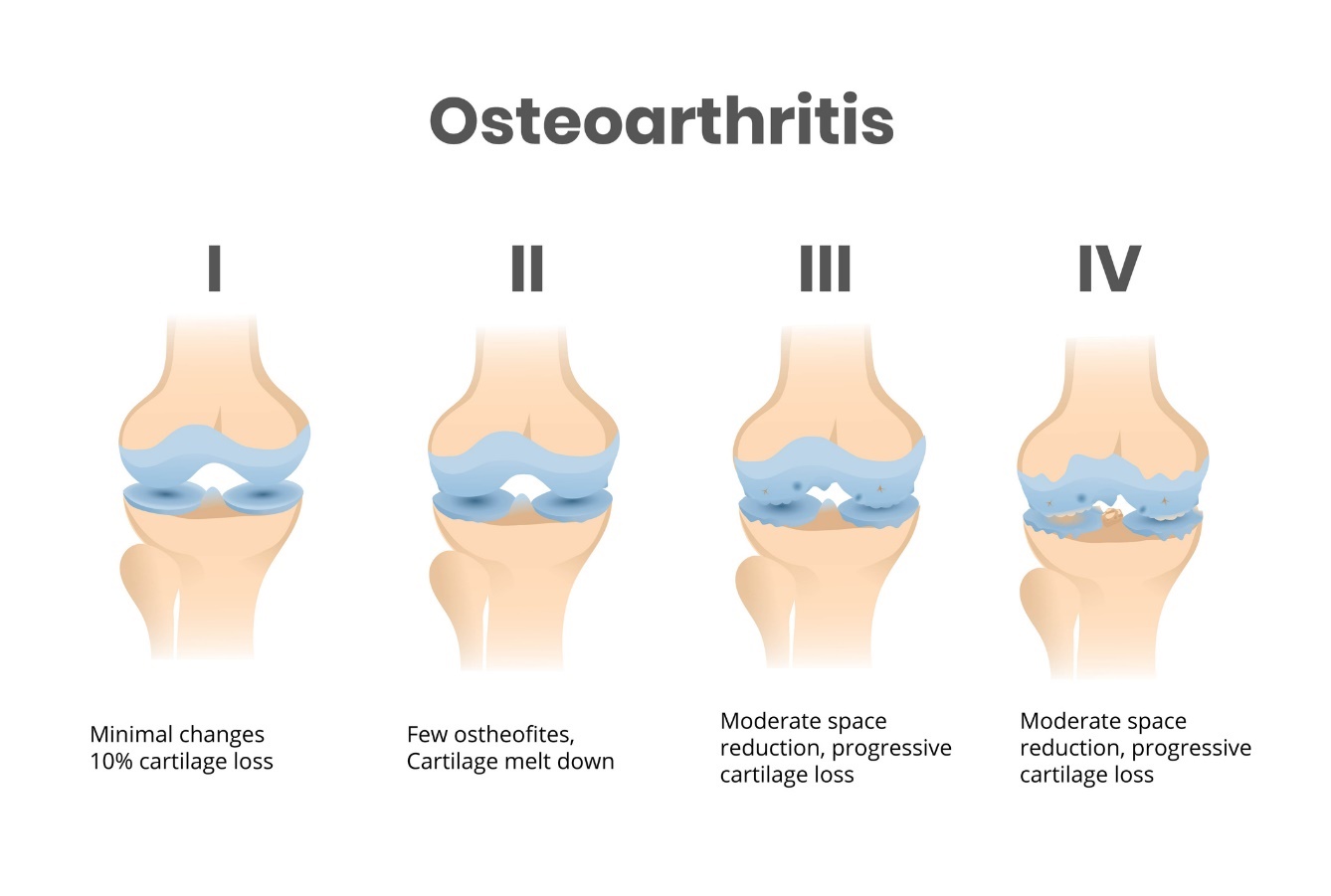- koxartroza.sk - What is coxarthrosis?
- fyzioklinika.cz - ARTHROSIS OF THE Clavicular joint - KOXARTROSIS
- pubmed.ncbi.nlm.nih.gov - Coxarthrosis-a disease of multifactorial etiology methods of prevention and treatment. The role of kinesiotherapy in coxarthrosis, Luana Macovei, Isabella Brujbu, R V Murariu
- arthroplastyjournal.org - Intracapsular pressure and pain in coxarthrosis: Otto Robertsson, MD, PhD Hans Wingstrand, MD, PhD Rolf Önnerfält
What is coxarthrosis, what are its causes, symptoms and diagnosis?

Hip pain is a basic symptom of coxarthrosis, which is one of the most common joint diseases - osteoarthritis.
Characteristics
The hip joint
The hip joint istechnically called the articulatio coxae. It is one of the largest and most important joints of the human body.
It is a simple ball-and-socket joint that consists of two main bony components. The spherical end of the femur fits into a socket in the pelvic bone (acetabulum).
The touching parts of the bones are covered and protected by hyaline cartilage. The stability of the joint is provided by the surrounding soft structures, muscles, strong ligaments and the joint capsule.
The movement and mobility of the hip joint is provided by muscle groups from the spine, pelvis, thigh and buttocks. The mobility of the hip joint is sufficient despite its strength.
The kinematics of the hip joint consists of flexion (forward movement), extension, adduction, abduction and rotation (rotational movement).
Osteoarthritis
Osteoarthritis is a joint disease in which the balance between the production (synthesis) and degradation of articular cartilage components is disturbed. It is a non-inflammatory degenerative process that leads to the progressive destruction of cartilage structures.
There is a loss of nourishing synovial fluid within the joint, damage to the surrounding soft structures and the formation of osteophytes (bone growths) at the edge of the articular surfaces. The course of arthrosis is gradual and usually slowly progressive.
Exceptionally, it may be rapidly progressive. The main manifestation of arthrosis is pain in and around the joint and reduced mobility.
Coxarthrosis is the most common disease of the hip joint and one of the most common types of arthritis in the human body.
The incidence of coxarthrosis increases with age. Approximately 80% of people over the age of 70 are affected by this degenerative joint disease.
Osteoarthritis can be a cause of incapacity for work, but also a reason for receiving a disability pension. It depends on the health of the patient, the extent of the disease and possible complications of work activities.
In the case of osteoporosis, the degree of disability is determined by examination and medical advice, but mainly by objective clinical findings and densitometric examination (measurement of bone mass).
Causes
Primary coxarthrosis arises without an obvious cause. Genetic factors, age, lifestyle and long-term loading of the joint play a major role.
Secondary coxarthrosis is the result of other presenting disorders and diseases such as congenital hip dysplasia, hypermobility or inflammatory and metabolic diseases of the musculoskeletal system (e.g. Bechterev's morbus).
Causes and factors of coxarthrosis:
- Long-term physical overuse of the joint
- Wear and tear on the joint
- Older age
- Genetic factor
- Improper movement stereotypes
- Imbalance of the musculoskeletal system
- Professional sport
- Female gender
- Mechanical damage, trauma
- Influence of nutrition and overweight
- Joint innervation disorders
- Congenital defects
- Inflammations of the joint
Symptoms
The first symptom is usually a mild dull pain that occurs with greater physical exertion.
Muscle imbalances around the joint are also often present - overstretched, shortened or weakened muscles. It is also possible to localize muscle spasm - stiff painful muscle fibres.
In the next stage of coxarthrosis, pain is present even with minor exertion, static load, prolonged standing or sitting.
In the more advanced stages, resting and night pain is common, with no load on the joint. Nerve oppression caused by swelling of the joint structures may occur.
The type of pain may vary depending on position, movement, changes in pressure or weather.
In the higher stages, there is a restriction of joint mobility in extreme positions and the function of the joint itself is compromised.
As the degenerative process progresses, there may be a complete loss of joint mobility. The patient begins to miss the affected joint during physical activity.
Subsequently, the presence of extensive muscular and musculoskeletal imbalances and atrophy (wasting) of the muscles around the disused joint is common.
The most common symptoms of coxarthrosis are:
- Dull pain in the hip joint
- Pain in the muscles around the joint
- Worsening pain with increased physical exertion
- Restless night pain
- Restriction of movement in the joint
- Feeling of dryness and friction inside the joint
- Worsening of pain when the weather changes
Diagnostics
The orthopaedic surgeon examines the stability of the joint, its mobility, resistance and mobility in various extreme positions.
The basic diagnostic procedure is the X-ray examination, which objectively and structurally assesses the current state and extent of joint damage.
According to the X-ray, arthritis is divided into 4 main stages. The last 4 stages are the worst in terms of progression and stage of the disease.
Often, grades 3 and 4 are indications for surgical treatment, but this is not always the rule. The patient's subjective pain and the current function and mobility of the hip joint are important in choosing the type of treatment.
In some cases, grade 2 coxarthrosis is already an indication for surgery. This always depends on the agreement between the doctor and the patient.
Doctors and patients are often initially inclined towards conservative treatment. Conservative treatment will either help the patient's condition or become a preparation for surgical treatment.
A characteristic feature of the course of coxarthrosis is its gradual, slow evolution, alternating between a phase of relative calm without major problems and a period of decompensation and deterioration.
If the course of the disease is prolonged with frequent phases of decompensation despite conservative treatment, surgical treatment and total hip replacement - endoprosthesis should be considered.

The condition of arthrosis is divided into 4 basic classifications according to the diagnostic X-ray:
- Grade 1: There is a slight narrowing of the joint space and the beginning of osteophyte formation - bony growths along the joint.
- Grade: Narrowing of the articular cleft is more evident along with more advanced osteophyte formation. Changes in cartilage structure are evident.
- Grade: Significant narrowing of the articular cleft, formation of larger osteophytes, intra-articular cysts and development of initial joint deformities.
- Grade: In the last stage, the disappearance of the articular cleft, the presence of large osteophytes and advanced deformities of the joint. The presence of ankylosis - the disappearance of the joint - is also possible.
How it is treated: Coxarthrosis
How is coxarthrosis treated? Medication, exercise to after surgery of the joint
Show moreCoxarthrosis is treated by
Other names
Interesting resources










